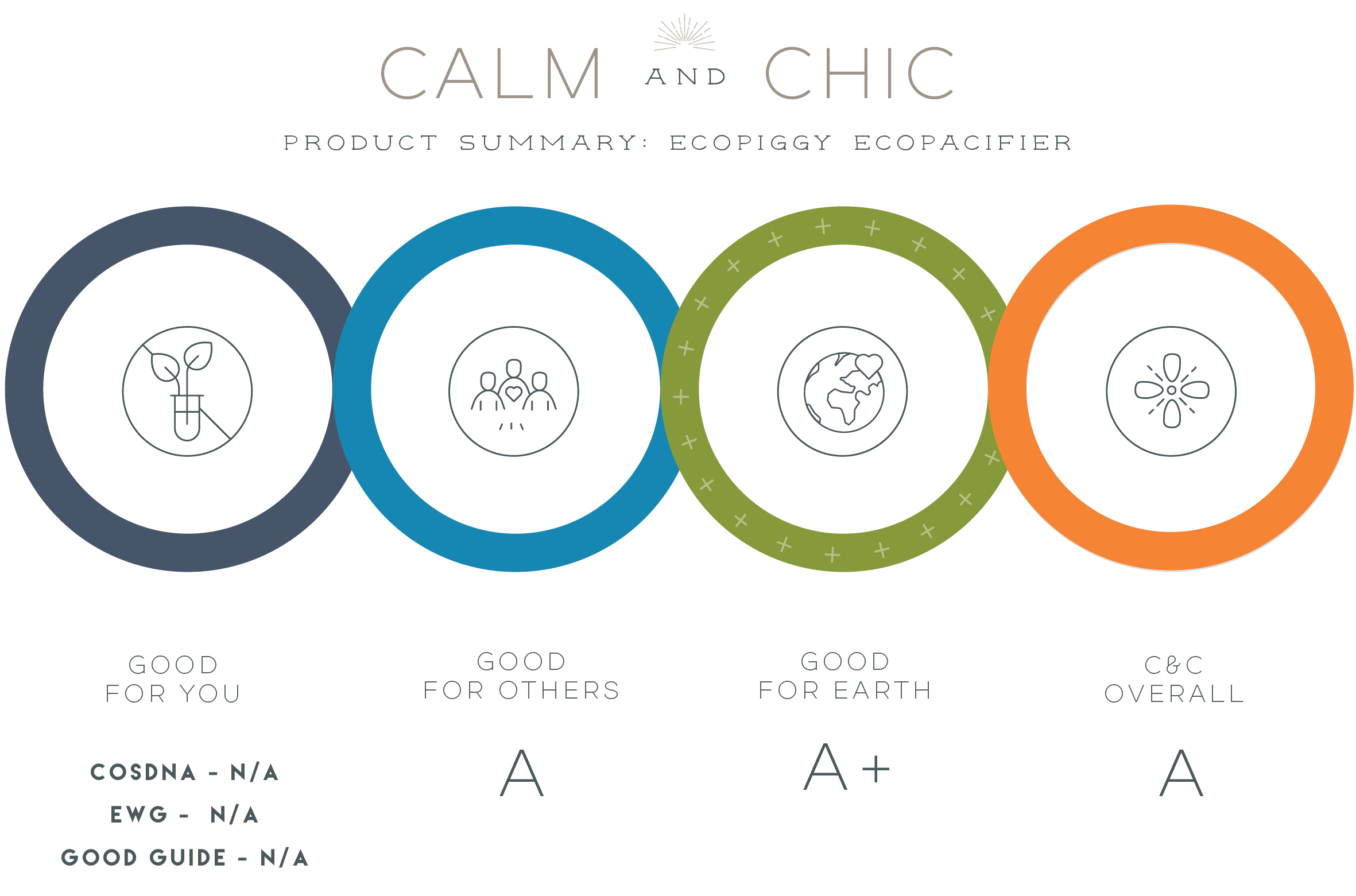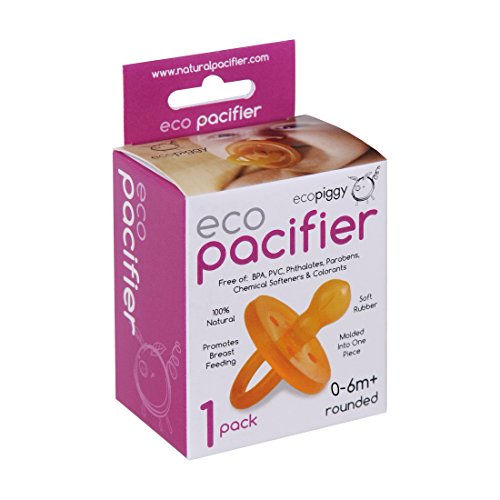Let's Chat About Natural Rubber Pacifiers
Four months before baby R. arrived I was sharing a quiche at Byen Bakeri with my friend, Emma. Even before I’d gotten pregnant, I’d singled Emma out as one of my mama-exemplars. Mostly, I just admire her healthy, leisurely approach to mamahood. She’s also incredibly present—both with her kids and her friends.
Anyways, I’d mentioned I registering for some pacifiers (or in her Canadian slang “Oh, you mean soothies...”) and I asked her which ones she preferred. Between bites, she shrugged a bit and said it depends on the babe, but for her last two kids, she ended up using some natural rubber ones.
And thus started my search into the world of natural rubber pacifiers.
There’s quite the assortment out there: Hevea, Ummy, Ecopiggy, Bibs, Sweetie and Natursutten. In general, there’s a couple pros and cons with any natural rubber pacifier:
Pros:
Natural rubber pacifiers are more flexible and stretchable than your typical silicone ones. Meaning it mimics the breast a bit more—a total plus if you have a discerning breastfed babe.
Natural rubber pacifiers are often a more environmentally friendly alternative. Plus, they are also biodegradable.
Natural rubber pacifiers are made with far fewer ingredients. Think no parabens, phthalates, chemical softeners or colorants.
Cons:
Your babe’s long-term sucking (think 6-8ish weeks of constant sucking on a single pacifier) on the natural rubber will actually expand the pacifier’s nipple. This expansion can be a bit problematic for two reasons. First, the rubber can expand to become a size larger than your baby might prefer. Second, the rubber can become softer, meaning that your kiddo might end up molding their own unique pacifier shape, making it rather difficult to “replace” to their liking. To fix this, plan on buying the pacifiers in bulk, then rotating the pacifiers in use.
Natural rubber pacifiers don’t last nearly as long as their silicon sisters. Most brands last between 6-8 weeks before peeling or becoming bit sticky/soft.
Natural rubber pacifiers might be problematic if either you or your little one is allergic to latex.
Ultimately, in prep for baby R’s arrival I ended up purchasing a handful of pacifiers. Mostly because you never really know which one your babe will prefer—if any.
My stock ended up having a bit of everything, including an adorable teeny tiny Wee Thumbie (just in case we got to meet R. two or three months early). Anyways, from the natural rubber brands out there, I ended up ordering two different pacifiers from Ecopiggy for my pre-baby stock.
Ecopiggy is health conscious and sustainably-focused company that both owns and corrals some of the best eco friendly baby wellness brands from around the interwebs. Ecopiggy was launched in 2008 by Hayley Mete (a yogi, cyclist, entrepreneur, and native-born Brit) who nestled the company right under Cascade Siskiyou National Monument in Oregon. Ecopiggy’s Ecopacifer was designed in collaboration with a clinical psychologist and mother of two.
I was attracted to the Ecopiggy’s Ecopacifer for a few reasons. The company collaborates with a single-source, and uniquely sustainable plantation in Malaysia. On the planation, the tree sap is gathered for nearly 25 years, then (using responsible foresting practices) the tree is harvested and a replacement tree is replanted. Ecopiggy believes in keeping manufacturing local (to cut down on their footprint and support the emerging economy). So, instead of then shipping the raw materials to Italy (like most rubber pacifier brands) Ecopiggy has invested in, partnered with, and supports the plantation with onsite manufacturing. Ecopiggy’s relationship with their plantation isn’t merely supplier-buyer focused, it’s a true partnership that’s also third party certified for fair-trade practices.
After the pacifiers are formed in a single-piece mold, they are sent to Oregon where it’s checked and packaged lovingly by hand.
There are a four different Ecopacifers to choose from, I wasn’t sure which one baby R. would prefer, so, I grabbed two 0-6 month options: the single orthodontic option and the rounded option. Here’s what the ergonomic one looks like.
Baby R, ended up loving the orthodontic one far more. Hurray! Ever since then, I’ve been buying her pacifiers via the three-pack option. It’s about $20ish for each pack. Even though Baby R is 7 months, she still seems happy with the 0-6m size (although I did offer her Ecopiggy’s 6+m alternative, she just doest seem to be a fan yet).
If you have plans to head over to the Ecopiggy website, my friend Antonia hooked me up with a coupon code to get y'all 20% off any purchase. It's “CALMANDCHIC20" Woot! Woot!Hope this helps with your own journey to find the perfect pacifier for your baby too! Have you found other natural pacifiers you love too? I’d love to read all about it. Comment below and share your own experiences.
XOXO,
Lemon
Good For You - Ecopiggy’s Ecopacifiers are incredibly chic and basically mother nature’s gift to the soothing world. The pacifiers are molded in a single piece from 100% pure rubber —hence that distinct amber tone. The rubber is gathered from Hevea brasiliensis trees and manufactured without chemical softeners or colorants. The pacifiers are also BPA-Free, PVC-Free, Paraben-free and Phthalate-free. So far, this pacifier has not caused any problems for me while breastfeeding.
Good For Others - Take a quick glance at Ecopiggy’s founder’s instagram account (ecopiggy.mama) and you’ll get a feel for the magic that makes up this company. With four close-knit employees, Ecopiggy emphasizes conscious lifestyles on both on a commercial and personal level. The company works with a single source rubber plantation in Malaysia and has a third party monitor all quality and fair-trade practices. The company also keeps their manufacturing and their eco-footprint to a minimum by processing at the source (instead of shipping raw materials to multiple locations around the world). Then each final pacifier is sent to Oregon where it’s rigorously reviewed and packaged by hand.
Good For Earth - The rubber for each pacifier is grown on a sustainable plantation in Malaysia. Most of the Hevea brasiliensis trees on plantation will share its sap for about 25ish years. When the tree retires, it’s harvested and then lovingly used for furniture, flooring or toys. A replacement tree is planted. Each pacifier is wonderfully biodegradable (FYI natural rubbers take about 50 or-so-years to decompose). I ended up emailing the founder with a few follow-up questions before this post and it’s so easy to see much she and her company truly care. This product also comes in a 100% recyclable cardboard box. ***Update, it’s been a few months since I first started using these pacifiers and I’ve ordered a few more of Ecopiggy’s products to show my support. Baby R. especially loves their leashed Bambu training spoon and Rubbee blocks. If you have a chance, you should totally check out both.
C&C Overall - I truly love these pacifiers. The extra large looped "handle" on the pacifier makes it easy for older babes to put it in their mouths. Baby R. is just short of seven months and the fact that she can grab the pacifier herself makes nighttime wakings a breeze. I also appreciate how it’s molded in one piece instead of several pieces stuck together (less of a chocking-hazard). Things to note: I feel like the smallest size ecopiggy offered was still a bit too large for my newborn. Also, I wish I would’ve purchased the pacifiers in bulk, then rotated my babe through 6 or 8 of them at a time. This is because the natural rubber does tend to expand and my baby seemed a bit offput when I bought replacement pacifiers that were a bit smaller than the ones she was used to. Quick FYI, natural rubber pacifiers are a bit more high maintenance than silicon binkies. Plan on boiling each one beforehand and replacing them sooner (6-8 weeks).






